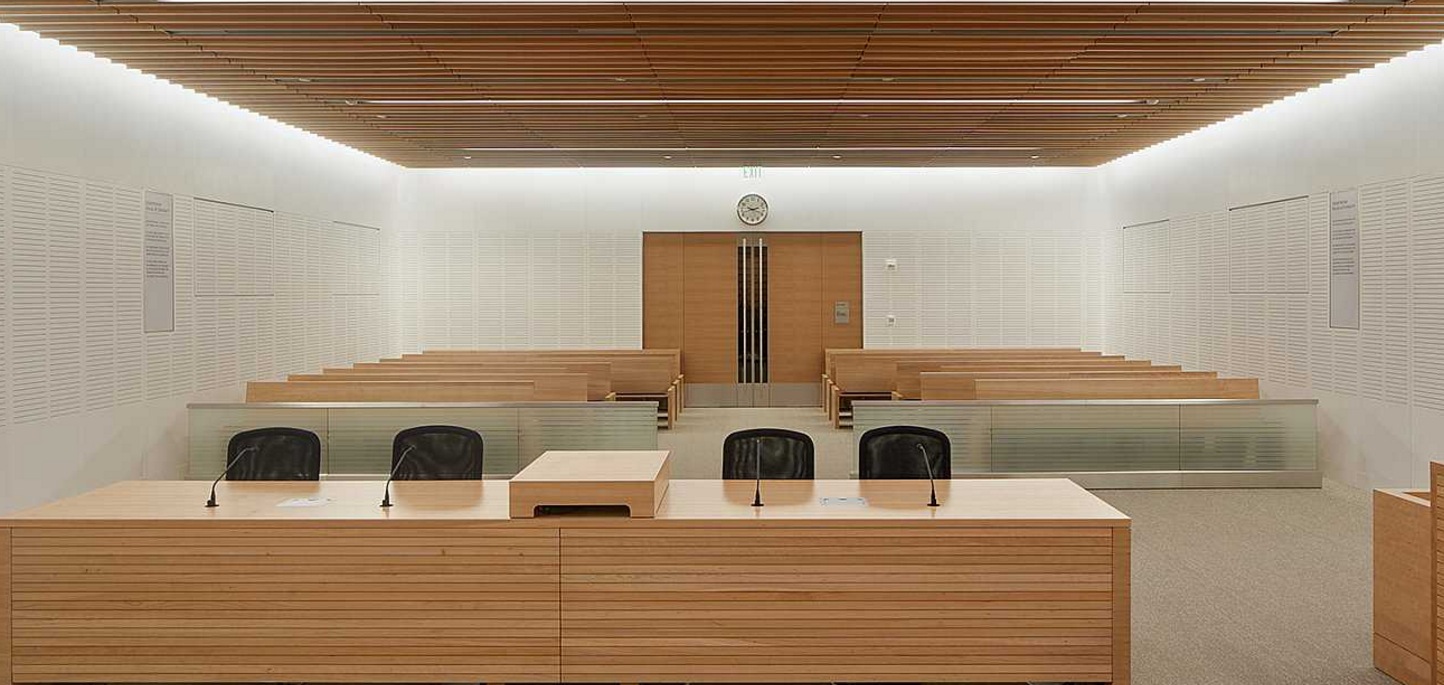The American Institute of Architects’ Academy of Architecture for Justice (AIA AAJ) named the projects that have received 2015 Justice Facilities Review Awards.
The three Citation winners were CO Architects’ South County Justice Center, Superior Court of Tulare County in Porterville, Calif.; SOM’s San Bernardino Justice Center in San Bernardino, Calif.; and RMKM Architecture’s East Mesa Public Safety Complex in Las Cruces, N.M.
According to AIA, the Justice Facility Review documents “best practices in planning and design for Justice Architecture, including functionality, security and safety, technology, accessibility, community impact, sustainability and economic feasibility (first cost and long-term cost of ownership), longevity (lifecycle performance and operation), as well as aesthetic achievements are essential elements for identifying the success of these projects.”
Sustainable design, including meeting a minimum of 60% reduction in energy use from regional baselines, and incorporating innovations in planning, design, and sustainability is also factored in.
Five entries were also published by AIA AAJ: NORR Limited’s Elgin County Courthouse in St. Thomas, Ontario; Lionakis’ Stanislaus County Juvenile Commitment Facility in Modesto, Calif.; DLR Group’s Superior Court of California, Calaveras County Courthouse in San Andreas, Calif.; RicciGreene Associates and Bushey Feight Morin Architects’ Catonsville District Courthouse in Catonsville, Md.; and DLR Group’s Everett Municipal Court in Everett, Wa.
Related Stories
| Aug 11, 2010
Financial Wizardry Builds a Community
At 69 square miles, Vineland is New Jersey's largest city, at least in geographic area, and it has a rich history. It was established in 1861 as a planned community (well before there were such things) by the utopian Charles Landis. It was in Vineland that Dr. Thomas Welch found a way to preserve grape juice without fermenting it, creating a wine substitute for church use (the town was dry).
| Aug 11, 2010
Special Recognition: Triple Bridge Gateway, Port Authority Bus Terminal New York, N.Y.
Judges saw the Triple Bridge Gateway in Midtown Manhattan as more art installation than building project, but they were impressed at how the illuminated ramps and bridges—14 years in the making—turned an ugly intersection into something beautiful. The three bridges span 9th Avenue at the juncture where vehicles emerge from the Lincoln Tunnel heading to the Port Authority of New Yor...
| Aug 11, 2010
Jefferson Would Be Proud
The Virginia State Capitol Building—originally designed by Thomas Jefferson and almost as old as the nation itself—has proudly served as the oldest continuously used Capitol in the U.S. But more than two centuries of wear and tear put the historical landmark at the head of the line for restoration.
| Aug 11, 2010
29 Great Solutions
1. Riverwalk Transforms Chicago's Second Waterfront Chicago has long enjoyed a beautiful waterfront along Lake Michigan, but the Windy City's second waterfront along the Chicago River was often ignored and mostly neglected. Thanks to a $22 million rehab by local architect Carol Ross Barney and her associate John Fried, a 1.
| Aug 11, 2010
Platinum Award: The Handmade Building
When Milwaukee's City Hall was completed in 1896, it was, at 394 feet in height, the third-tallest structure in the United States. Designed by Henry C. Koch, it was a statement of civic pride and a monument to Milwaukee's German heritage. It was placed on the National Register of Historic Places in 1973 and designated a National Historic Landmark in 2005.
| Aug 11, 2010
John Adams Courthouse
After more than a century without a substantial renovation, Old Suffolk County Courthouse, designed in Neo-Classical style by Boston's first city architect, George Clough, was overdue for a facelift. Enter the makeover team: Boston-based architects Childs, Bertman, Tseckares and general contractors Suffolk Construction/NER Construction Management.
| Aug 11, 2010
The pride of Pasadena
As a shining symbol of civic pride in Los Angeles County, Pasadena City Hall stood as the stately centerpiece of Pasadena's Civic Center since 1927. To the casual observer, the rectangular edifice, designed by San Francisco Classicists John Bakewell, Jr., and Arthur Brown, Jr., appeared to be aging gracefully.







